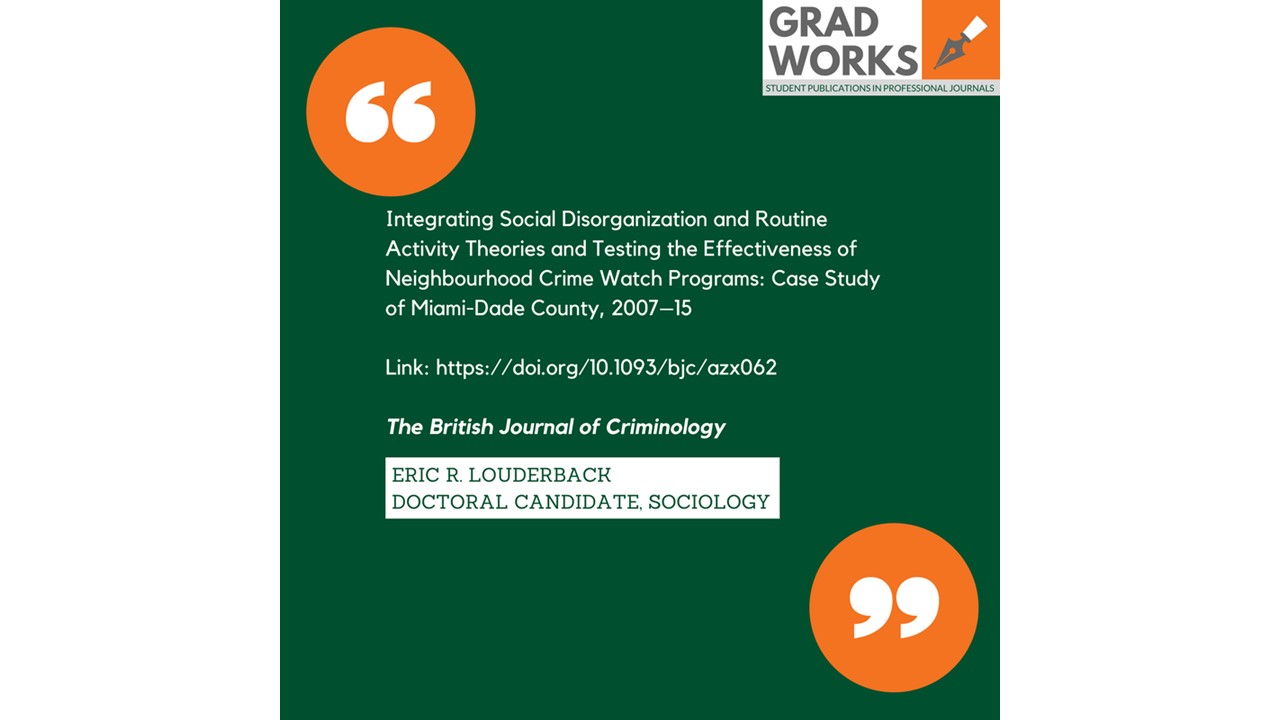Article Title: Integrating Social Disorganization and Routine Activity Theories and Testing the Effectiveness of Neighbourhood Crime Watch Programs: Case Study of Miami-Dade County, 2007–15
Authors: lead-authored by doctoral candidate Eric R. Louderback from the Department of Sociology, College of Arts and Sciences, University of Miami; with Dr. Shouraseni Sen Roy from the College of Arts and Sciences, University of Miami
Publication: The British Journal of Criminology
Full Article Link: https://doi.org/10.1093/bjc/azx062
The study was recently published in The British Journal of Criminology and is entitled: “Integrating Social Disorganization and Routine Activity Theories and Testing the Effectiveness of Neighbourhood Crime Watch Programs: Case Study of Miami-Dade County, 2007–15.” The study investigates the effectiveness of citizens’ community crime watch programs in reducing crime and it is part of an interdisciplinary collaboration with Dr. Shouraseni Sen Roy from the Department of Geography and Regional Studies at the University of Miami.
Using unique longitudinal data from 290 Census tracts in Miami-Dade County, Florida, the authors utilized advanced statistical and geospatial analysis methods to test for the effects of crime watch programs, and measures from social disorganization and routine activity theories, on the overall rate and change in burglary, robbery and aggravated assault between the years 2007 and 2015. The findings show that crime declined between 2007 and 2015 the most in neighborhoods with crime watch programs, while Local Moran’s I analyses revealed that crime watches and all three crime types were significantly clustered across neighborhoods. The results from negative binomial and geographically weighted regression analyses also provide partial support for social disorganization and routine activity theories for each crime type. Overall, the findings suggest that neighborhood watch programs have moderate support for reducing community crime and that geospatial methods are important to use when investigating crime patterning in cities.
Please see the link to the published article in The British Journal of Criminology here: https://doi.org/10.1093/bjc/azx06

